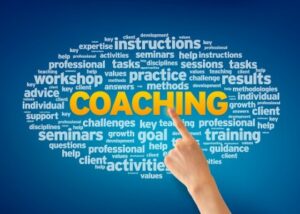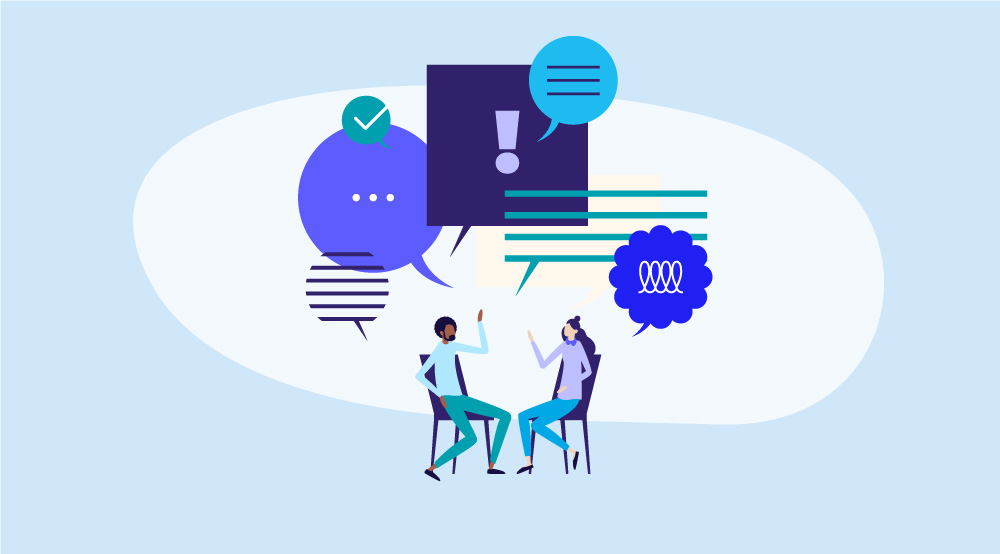In the dynamic landscape of today’s workplace, organizations are recognizing the profound impact that effective talent development can have on their success. Employee coaching has emerged as a pivotal strategy, going beyond traditional training approaches to nurture individual growth, enhance performance, and cultivate a culture of continuous improvement.
In this comprehensive blog, we delve into the world of employee coaching, exploring its significance, benefits, and practical strategies for implementation.
Contents
What is “Employee Coaching”?

Employee coaching is a personalized and ongoing process aimed at developing an individual’s skills, enhancing performance, and fostering professional growth within a workplace setting. Unlike traditional training programs that often focus on imparting specific skills or knowledge, coaching is a dynamic and collaborative relationship between a coach (often a manager or a professional coach) and an employee.
The primary goal of employee coaching is to unlock an individual’s full potential by providing guidance, support, and feedback tailored to their unique strengths, weaknesses, and career aspirations. This approach acknowledges that each employee is distinct, with different learning styles, motivations, and areas for improvement.
Key aspects of employee coaching include:
- Individualized Development: Coaching recognizes the specific needs of each employee, tailoring the development process to their skills, goals, and career path.
- Continuous Feedback: Regular and constructive feedback is a crucial component of employee coaching. It goes beyond annual performance reviews, providing ongoing insights to help employees improve and excel.
- Goal Setting: Coaches work with employees to establish clear and achievable goals. These goals align with both individual aspirations and organizational objectives.
- Skill Enhancement: Coaching addresses not only current performance but also focuses on developing new skills and competencies that are relevant to the employee’s role and future career progression.
- Career Growth: Employee coaching often plays a role in career development, helping individuals identify and pursue opportunities for advancement within the organization.
- Building Confidence and Motivation: By offering encouragement and support, coaching helps employees build confidence in their abilities and stay motivated to achieve their professional objectives.
Employee coaching can be conducted through one-on-one sessions, group coaching, or a combination of both, depending on the organization’s structure and goals. Successful coaching relationships contribute to a positive work environment, increased employee engagement, and a culture of continuous learning and improvement.
Role of Employee Coaching in Employee Development

Employee coaching plays a pivotal role in employee development, contributing to the growth and success of both individuals and the organization as a whole. Here are key aspects highlighting the significance of employee coaching in employee development:
Individualized Growth Plans:
- Employee coaching tailors development plans to the specific strengths, weaknesses, and career aspirations of each individual.
- It ensures that development efforts are personalized, addressing the unique needs of employees rather than adopting a one-size-fits-all approach.
Skill Enhancement:
- Coaching focuses on identifying and developing essential skills required for an employee’s current role and future career progression.
- It provides targeted guidance to help employees acquire new competencies, ensuring they stay relevant and effective in their roles.
Continuous Feedback:
- Regular and constructive feedback is a hallmark of employee coaching, offering insights into performance and areas for improvement.
- Feedback is not limited to formal performance reviews; it is an ongoing dialogue that facilitates continuous learning and adaptation.
Goal Setting and Achievement:
- Coaches collaborate with employees to set clear and achievable goals aligned with organizational objectives.
- The process of setting, tracking, and achieving goals fosters a sense of accomplishment and motivates employees to strive for excellence.
Career Development:
- Employee coaching often includes discussions about career aspirations and paths for advancement within the organization.
- It helps employees navigate their career trajectories, identifying opportunities for growth and guiding them in making strategic career decisions.
Increased Engagement:
- Engaged employees are more likely to be productive and committed to their roles. Employee coaching fosters a sense of engagement by demonstrating that the organization invests in the professional development of its workforce.
Confidence Building:
- Through supportive and encouraging interactions, coaching helps build employees’ confidence in their abilities.
- Confidence is a key factor in taking on new challenges, making decisions, and contributing proactively to the organization.
Retention and Talent Development:
- Organizations that prioritize employee coaching are likely to retain top talent by demonstrating a commitment to their growth and well-being.
- Coaching contributes to creating a talent pipeline by developing employees with the potential to take on leadership roles.
5 Step Procedure for Employee Coaching
Implementing an effective employee coaching program involves a systematic and strategic approach. Here is a 5-step procedure for employee coaching:
Assessment and Goal Setting
- Identify Development Needs: Begin by assessing the current skills, strengths, and areas for improvement of the employee. This can be done through self-assessments, 360-degree feedback, and discussions with the employee’s manager.
- Define Clear Goals: Collaboratively set specific, measurable, achievable, relevant, and time-bound (SMART) goals with the employee. Align these goals with both individual career aspirations and the organization’s objectives.
Establishing the Coaching Relationship
- Select a Coach: Designate a coach who could be the employee’s manager, a mentor, or a professional coach. Ensure the coach possesses the necessary skills, experience, and commitment to guide the employee effectively.
- Build Trust and Rapport: Establish an open and trusting relationship between the coach and the employee. Create an environment where the employee feels comfortable discussing challenges, seeking feedback, and sharing aspirations.
Development Planning
- Create a Development Plan: Based on the identified goals, work together to create a detailed development plan outlining the steps, resources, and timelines needed to achieve the objectives.
- Select Learning Methods: Determine the most effective learning methods, such as on-the-job training, workshops, mentorship, or online courses. Tailor the plan to the employee’s preferred learning style.
Regular Feedback and Coaching Sessions
- Schedule Regular Meetings: Conduct regular one-on-one coaching sessions to review progress, discuss challenges, and provide feedback. The frequency of these sessions may vary depending on the nature and urgency of the goals.
- Offer Constructive Feedback: Provide specific and constructive feedback on the employee’s performance. Focus on both strengths and areas for improvement, emphasizing growth and learning rather than punitive measures.
Adjustment and Recognition
- Adjust the Plan as Needed: Periodically reassess the employee’s progress and adjust the development plan as necessary. Be flexible in adapting to changes in the organization or the employee’s role.
- Recognize Achievements: Celebrate milestones and achievements. Positive reinforcement enhances motivation and reinforces the value of the coaching process.
Implementing these steps requires commitment, communication, and a genuine interest in the employee’s professional development.
Best Employee Coaching Strategies

Effective employee coaching involves employing strategies that foster individual growth, skill development, and overall performance improvement. Here are five best employee coaching strategies:
Active Listening and Empathy:
- Strategy: Actively listen to employees, understanding their concerns, aspirations, and challenges. Demonstrate empathy to build a trusting and supportive coaching relationship.
- Impact: Employees feel heard and understood, fostering a sense of trust. This foundation is crucial for effective coaching and collaboration.
Goal Alignment and SMART Objectives:
- Strategy: Collaboratively set clear and specific goals that are aligned with both the employee’s aspirations and organizational objectives. Use the SMART criteria (Specific, Measurable, Achievable, Relevant, Time-bound) to ensure clarity and focus.
- Impact: Well-defined goals provide a roadmap for coaching sessions, enabling targeted efforts toward measurable outcomes and professional development.
Strengths-Based Coaching:
- Strategy: Identify and leverage the employee’s strengths. Tailor coaching sessions to capitalize on these strengths while addressing areas for improvement. Emphasize positive reinforcement.
- Impact: Employees are more likely to excel when their strengths are acknowledged and utilized, leading to increased confidence, motivation, and job satisfaction.
Constructive Feedback and Continuous Communication:
- Strategy: Provide regular, constructive feedback on performance, emphasizing specific actions and results. Foster an environment of open communication where employees feel comfortable discussing both successes and challenges.
- Impact: Continuous feedback promotes a culture of learning and improvement. Employees gain insights into their progress, enabling them to make timely adjustments and grow in their roles.
Development Opportunities and Learning Resources:
- Strategy: Identify and provide relevant development opportunities, such as training programs, workshops, mentorship, or stretch assignments. Ensure access to resources that align with the employee’s learning preferences and career goals.
- Impact: Offering diverse learning opportunities empowers employees to acquire new skills and knowledge. It also demonstrates the organization’s commitment to their professional growth.
Implementing a combination of these strategies can create a robust employee coaching framework that not only addresses immediate performance needs but also fosters long-term professional development and success.
Conclusion
In conclusion, effective employee coaching stands as a dynamic and transformative approach to individual and organizational growth. By embracing strategies that prioritize active listening, goal alignment, strengths-based coaching, continuous communication, and development opportunities, organizations can cultivate a culture of learning and excellence.
In essence, employee coaching is a journey of mutual growth, where the successes of individuals intertwine with the triumphs of the organization. As we embrace the power of coaching, we pave the way for a workplace where every employee is not only equipped with the necessary skills but is also inspired to continually strive for excellence.
If you looking for online coaching MantraCoach is here to help. Book your free trial online coaching session now to connect with a specialist coach.


